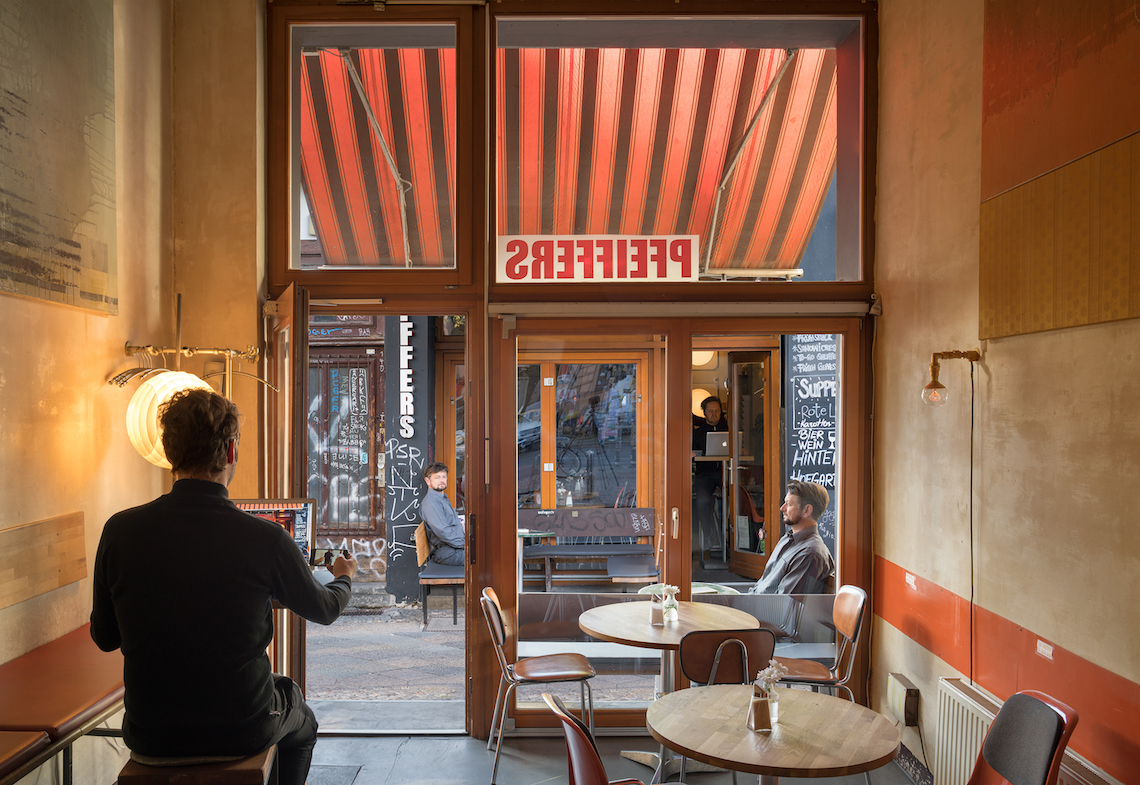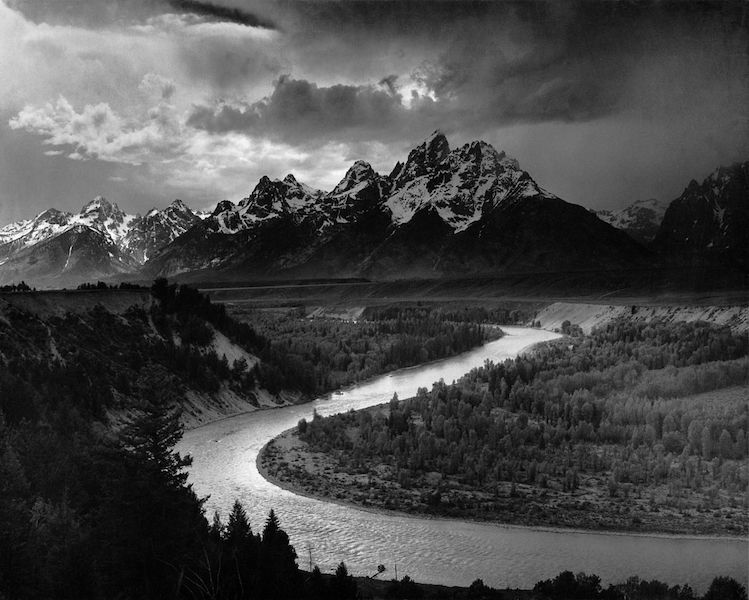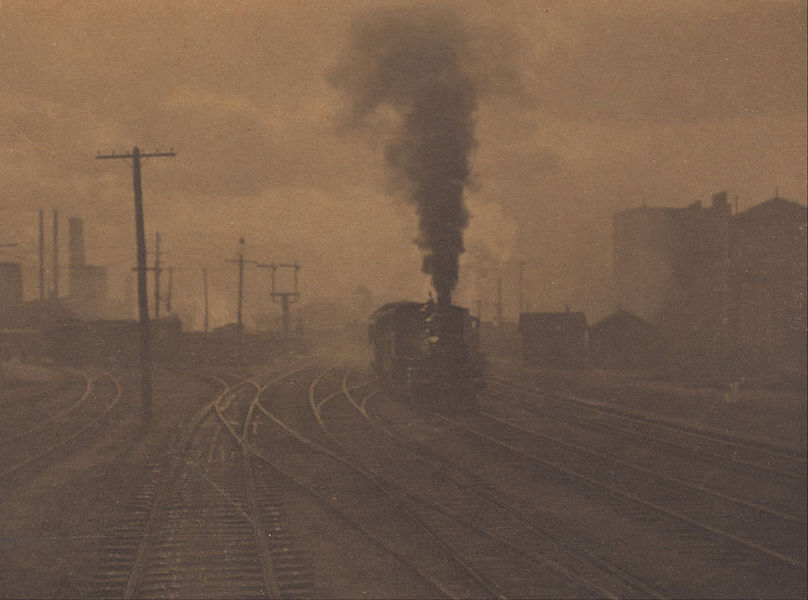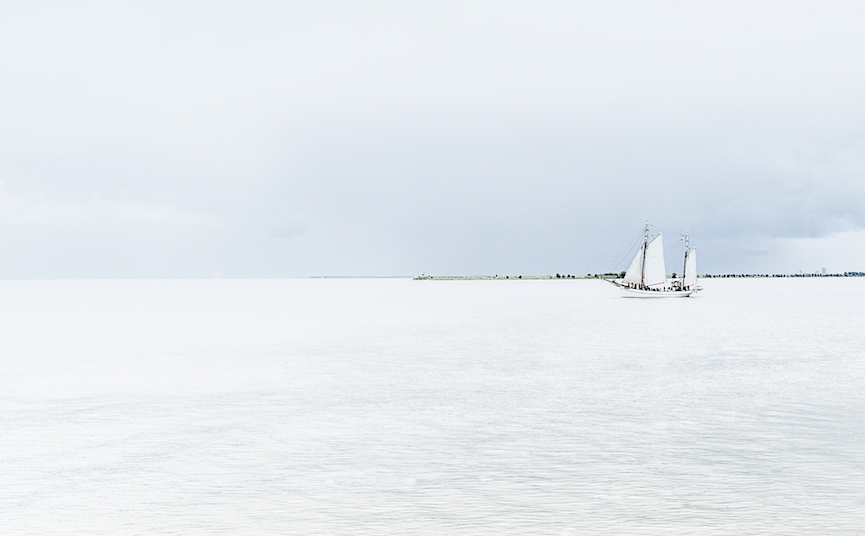
Comprehensive and diverse, photography has charmed and attracted artists and art lovers through decades, first for its prestige, then for its democracy and always for its wonderful artistic qualities. If the first purchases and commissions of photographs were connected to the status of the 19th-century elite, it’s safer to say that fine art photography collecting started later, after the medium achieved a more prominent status as a favorite tool of the avantgardists. Today, photography is globally recognized as an artistic device, employed by countless artists and documentarists internationally. Photography collectors often nurture a passion for the medium of light, building their collections with great care.
When we speak about photography, we must make a distinction between fine art photography and documentary photography. The first one is created in line with an artistic vision of its author, where the photo-medium is used only as a means to achieving the full expression. The latter is descriptive and representational, related to the media, as it provides a visual record of specific subjects or events, focused on the moment or a product rather than on a predefined vision. Both of these categories are respectable and collectible, but their goals are different and so is their audience. Fine art photography is admired and loved by art lovers and it’s rarely regarded as anything other than art, while documentary photography appeals to the broader public, sometimes regarded as the best way to preserve crucial historical moments.
With appreciation for old photographs, their vintage charm, and historical value, the focus of this text will be on contemporary fine art photography and collecting approaches. Knowing that the art of lens can captivate and inspire, here are several points to contemplate before the purchase of your first – or any – photographic print.

Ansel Adams – The Tetons and the Snake River, 1942 – Grand Teton National Park, Wyoming – image source Wikimedia Commons
Finding a Fine Art Photography Definition
The digital age and an increasing number of affordable and good cameras have changed photography from its core. Today, everyone can become a photographer and dabble in this craft. However, the most of the snapshotting amateurs rarely become photography artists, because fine art photography is not about the technique.
Like we said, there is a significant difference between fine art and documentary photography, backed up by a number of scholarly definitions. Still, one of the best definitions of the matter came from Ansel Adams, a great master of this craft, saying: “Art implies control of reality, for reality itself possesses no sense of the aesthetic. Photography becomes art when certain controls are applied.”
What Adams implies is that photographic art or artistic photography is inherently connected with the aesthetic theory and further elaborated with the artist’s own control of his idea. Therefore, fine art photography can be even regarded as a style in which the photographic medium is applied since it reflects the vision of the artist. This means that artistic photographer will never engage in “capturing the moment” for the moment’s sake, nor will he try to document anything. A photographic camera for such a creative is merely a tool through which he can express himself and shape the style of his art.
Diverse as the art itself, subjects of fine art photography are thus never literal, and they can even divert from reality a lot. It’s not about representation, it’s about expression, which draws photographic art closer to other arts, emphasizing its conceptual aspect.
Other kinds of photography are generally related to photojournalism and although they can be visually just as interesting as fine art photos, they are created in a moment, in a different context and from a different angle.
Finally, a single definition of fine art photography does not exist. Still, we can say that this category of photographs includes images made with a distinctive creative vision, often planned and contemplated beforehand, sometimes manipulated, where aesthetic and conceptual components play a vital role in the final piece, whether it is digital or analog.

Alfred Stieglitz – The Hand of Man, 1902 – image source Wikimedia Commons
Early History of Art Photography
As one of the “youngest” mediums, photography was invented in the early 19th century. A major breakthrough, it changed and influenced the history of art in different ways and consequently inspired the invention and development of the film art. Yet, the first photographs were hardly considered art. This was because the progress of then-innovative medium was very much connected with technical advancements, requiring knowledge of chemistry and optics.
The first attempts at artistic photography were conducted by several photographers of the Victorian era, with John Edwin Mayall leading the group. Mid-19th century, he made a series of daguerreotypes illustrating the “Lord’s prayer”, which was a staged, artsy presentation of an idea.
Towards the turn of the 20th century, two major figures were crucial for presenting photography as art and introducing it into art collections. Alfred Stieglitz and Edward Steichen were artists, photographers, and collaborators who allowed the camera craft to enter the fine art world in style. Alfred Stieglitz was probably the first who raised the question of considering photography as art. He started an avant-garde photographic journal “Camera Work” in 1903, an intellectual quarterly that hailed photography as a rightful medium of modern art. In later life, he gave his contribution to photography collecting together with his wife Georgia O’Keefe, when he gave a donation of 27 photographs to the Boston Museum of Fine Arts in 1924. This was the first time in history a major museum allowed photography to become a part of its permanent collection.
Featured more than any other photographer in “Camera Work”, Edward Steichen was responsible for the vast popularization of the art of the camera. At one point, he was the best-paid photographer in the world, while his works were commissioned by major agencies and publications of the era, such as Vogue and Vanity Fair.
Stieglitz and Steichen promoted Pictorialism and soft-focus, melancholic images. They considered it the supreme photographic art form. But, there was another stream of artists that adopted photography as a progressive medium of choice. Many creatives related to Dada and Surrealism were keen to explore the medium to its fullest, inventing photomontage in the process. Experimenting with chemicals and instruments in the darkroom, artists such as Man Ray, John Heartfield, Raoul Hausmann and other avantgardists made some of their most famous work.
As it developed further, modernism expanded the perceptions and treatment of photography, bringing a lot of influential new names and schools to light. Not to number all the movements that held photography in focus (or out of it), we’ll mention some names such as Edward Weston, Henri Cartier-Bresson, Paul Strand, Irving Penn, Bernd and Hilla Becher, Andreas Gursky, Cecil Beaton, Helmut Newton, Robert Mapplethorpe, Andy Warhol, Cindy Sherman, Nan Goldin, but there are many more who contributed greatly to the photographic landscape of the 20th century.

Paul Strand – Wall Street, New York, 1915 – image source Wikimedia Commons
Famous Photography Collections – Photographic Palaces of Image
Approachable as it may seem, photography studying requires considerable effort. To any true photo-enthusiast, this is a labor of love, an awarding venture, rather than demanding. As the best way to train the eye is to see a large amount of different photographic works, it’s a good idea to visit as many photography collections and exhibitions as possible. All the big museums and archives have photography departments and display them frequently.
Famous collectors, such as Elton John, for example, may lend their photo treasure to large institutions to exhibit and these shows are always a must-see. There are galleries that specialize in photography, while photography art fairs might be the best places to start collecting. Art fairs allow a wide selection of pieces to be presented to the buyers, and there is also an opportunity to meet the photographers and to talk with them about their work. And our Discovery Art Fairs are a great starting point for this process and your own collection. We present Fine Art Photography in Cologne and Frankfurt both and strive to create a space that encourages open exchange with the artists and other fine art afficionadoes.
Whether it’s housed by a museum or a private collector, a photography collection can become as important as any other collection of art. Throughout the world, there are institutions that preserve and keep photographs in their archive, while some of them are dedicated to this medium exclusively. While it is a rare opportunity, private collectors sometimes lend or otherwise display their prized possessions, showing personal affinities, but also trends in collecting.
Photography is, in general, a difficult medium to preserve. If not framed and stored properly, it can fade, the paper can get deformed and lose much of its original quality. Therefore, storing photography collections is a serious task, one that is better conducted with sufficient means. Big institutions, museums, and organizations usually have the necessary funds and staff to perform this work, although many of them demand state support. Still, their collections are built slowly through the years, carefully curated and ultimately – important.
Every major city in the Western hemisphere (although not only in the West) is home to a prominent photography gallery or museum. Some museums of art own seminal photography collections. It’s difficult to number all the museums that are worth the visit, but it’s important to mention a few. In London, Victoria & Albert Museum has an excellent photography collection. While in West Yorkshire, there is an equally important National Science & Media Museum housing the UK’s National Photography Collection as well as the renowned Royal Photographic Society Collection. In the USA, we have to start with the Boston Museum of Fine Art, an institution that played a special role in the history of the medium. Along with MoMA and Whitney Museum in New York, SFMoMa in San Francisco, there are many institutions around the country with fine art photography collections. We would add the Art Institute of Chicago, as well as Chicago’s Museum of Contemporary Photography, Getty Research Institute in Los Angeles, but also New York Public Library. In Europe, there is many museums, while visitors appreciate FoMU in Antwerp, Nederlands Fotomuseum in Rotterdam, and MEP in Paris, among others. Berlin is also the home for one of the best photography museums in Europe. It’s also the home to the collection of Helmut Newton Foundation. In Munich, the City Museum keeps one of the leading Photography Collections in Europe, with over 850.000 images in its archive.
When it comes to private collections that are occasionally exhibited, celebrities and wealthy people are often found among the owners. One of the most famous photography collectors in the world is Elton John. He is closely followed by businessmen such as a former Goldman Sachs partner, Arthur Walther, CEO and co-founder of the wealth management firm Summit Rock Advisors, David Dechman, a San Francisco investment banker, Andrew Pilara, from the family that created the Hyatt Chain and the Pritzker Architecture Prize, John and Lisa Pritzker, a legendary James Bond producer, Michael Wilson, the son of Gap founder Don Fisher and his wife Randi, an investment banker, Peter Cohen, and actress Jamie Lee Curtis.
By mentioning these collections of photography, we’ve only just scratched the surface. In reality, everyone can find a good and relevant collection of photographs in their own city with little effort, be it a private or a public one.

Evgeniya Petrova – Sailboat, 2015, Photo print on canvas
When Collecting – Get Technical
Multifarious as a medium, photography includes many techniques. Some of them are ancient and rarely in use and some of them ultimately hi-tech, and a dedicated collector should be acquainted with the most. It’s good to be familiar with different types of lenses and cameras, techniques and focuses, types of prints and paper, films, and other technical terms. This provides an understanding of the artistic method and gives a better clue about whether a photograph is successful or not. Also, market treats different types of prints in different ways. So, technical information can help understand if the price of a certain piece is fair, along with consideration of the artist’s status.
Another thing to take in regard is the condition. When purchasing from living contemporary artists, this is normally not an issue, but it may become one in the secondary market. The condition might influence the price value, even if the photo comes from a rare series. To preserve a photograph in mint condition, consider its hanging in your space. Photographs should never be exposed to direct sunlight and humidity. While the frames should be equipped with museum-quality glass or UV resistant Plexiglas.
Finally, consider the size of the print. Contemporary photographers often produce their work in different sizes. They are willing to customize in general, but if this is not the case – think about the impact of the image’s scale in the space. The best way is to view the piece in the desired size live and then make a decision about purchasing.

Helge Paulsen – Sweet Death
Develop a Taste in Photography
Fortunately, contemporary art does not recognize the hierarchy of genres or media. So, collecting fine art photography is very similar to collecting any other kind of art. Therefore, starting a collection of photo prints is generally not very different from collecting emerging painting or drawings, although some particularities exist.
One of the most important things a novice photography collector should do is develop a taste and find the preferred style between a multitude of expressions. As always, eyes are trained through seeing and learning. And as the knowledge broadens, the focus will become narrower and clear. In addition to conventional ways of learning, social media provide excellent information about the latest trends in contemporary art photography. Today, following curators, magazines, editors, and artists is only a click away.
In learning about the medium, you will soon start to discern themes and types of photography and you will learn to recognize artists from craftsmen. Looking into history, you can learn about Pictorialism, Dada and Surrealist photography, Sharp Focus Modernist styles such as Precisionism, but also a number of more commercial styles such as Portraiture or Fashion Photography and Photojournalism. Different themes can appear in different periods and styles and they can depict street scenes, nature, landscapes, architecture, interiors, still life, nudes, people and lifestyles of any kind. Getting into the matter, you will know how to recognize high quality black and white photographs from the rest, as well as to recognize treatment of color in color photography.
When the observing skills are honed enough (although this is a never ending process), collection planning is in order. Look for similar artists, images that correspond to your favorites, and slowly build a skeleton of your collection.
Never stop asking questions about photographers and images, examining the continuity in their style. In time, you will know if your preference is for representational, literal, suggestive, abstract or avant-garde photography and your collection concept will gain a defined course.

Mujaheda Khowajazada – After Several Forgetfullness, 2014-2016, Digital print
Contemporary Fine Art Photography at the DISCOVERY ART FAIR
DISCOVERY ART FAIRS’ Photography Section offers an insight into the diversity of contemporary fine art photography. Photographers that are presented come from different backgrounds and practices, while some of them follow a tradition of working within a narrative framework, producing works exceptionally popular with collectors in recent years. Collecting fine art photography is therefore made accessible to all interested art lovers, who can start purchasing artistic photo prints even with a smaller budget. Our photography curator is dedicated to selecting the most interesting names in contemporary camera art, the ones who promise to continue their careers and whose works will eventually become valued collectible items.
A number of new photo artists exhibited at our fairs, some of who have presented exciting new expressions in this medium. Evgeniya Petrova creates scenes, situations in and around landscapes, while the story is found instinctively, somewhere outside of the frame. Afghani photographer, Mujaheda Khowajazeda, focuses on women and history of her homeland, giving a voice to countless stories from the war-shattered country. Henry Landers from Berlin opens a window to new photographic perspectives with his “Transitory Realism” while demonstrating a vast knowledge of analog photography. Helge Paulsen from Hannover has an interesting approach that connects photography and writing, as he creates invented scenes formed in his mind. Natalia Ohar explores the world of tales and stories, presenting them in a new context, inspiring us to enter her world and to question these narratives from our point of view. Artist and photographer from Berlin, Götz Füsser, examines the importance of technique in photography and art, while Andrey Kezzyn is already well-known to the Berlin’s public as a fantasy-creator and critic.
Whether they are telling a story or provoking an emotion on a more visceral level, these photographers are masters of their craft, true artists who utilize light as their ultimate instrument. Every year, DISCOVERY ART FAIR invites you to join and discover the illustrious world of contemporary fine art photography and art.


